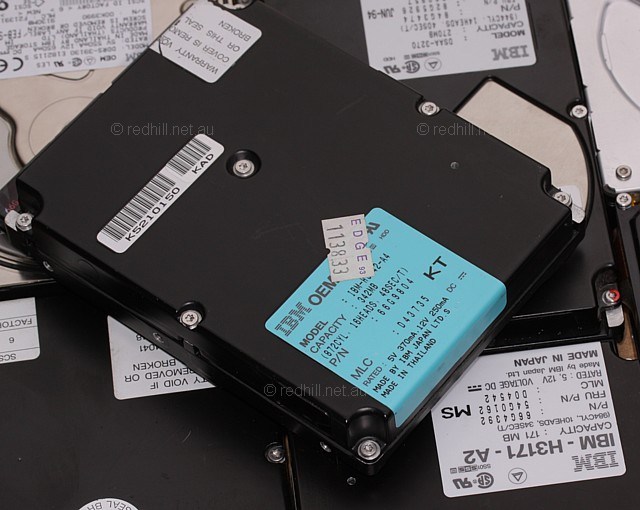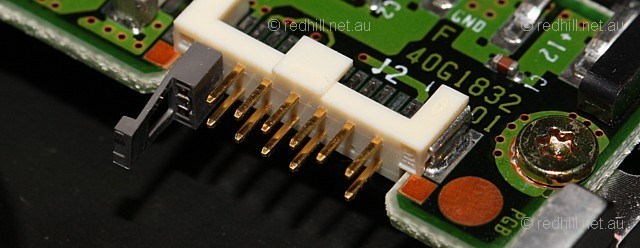

Photo: Red Hill.
IBM H3256
Traditionally, IBM kept itself to itself. For decades, the company which had invented the hard disk back in 1956 wasn't particularly interested in selling drives to other manufacturers. Hard drives were for mainframes, and "mainframe" was another word for 'IBM".
But eventually IBM discovered the personal computer, and of necessity bought in industry-standard personal computer components — hard drives from Seagate, CPUs from Intel, and so on. It wasn't until a good deal later that IBM formed a storage division to make hard drives for PCs, and not until later again that the giant of the industry started making CPUs.
Strangely, IBM never really mastered the art of selling things. For years, IBM produced all manner of components (hard drives, main boards, CPUs, operating systems, even RAM for a while), mostly of outstanding quality, and sometimes at bargain prices, and yet Big Blue was usually the forgotten giant. Smaller, more nimble companies understood how to sell things in a way that IBM never did.
Nevertheless, IBM-manufactured parts did find their way onto the open market eventually, and our experience with IBM hard drives as a new product began with the H3171, followed not too long afterwards by the H3256, which we used to replace the excellent outgoing Maxtor 7213. The H series drives were rather fast by the standards of the day and very reliable too.
Note the very unusual head count — three head drives became not uncommon some time later, but were all-but unheard of before about 1998.
Like all IBM drives, the H256 was beautifully finished, and it had a simple, logical jumper block. The drive pictured is set for master/stand-alone, the next jumper pair to the right was for slave. It is probably hard for the Windows-coddled generation to appreciate how important this used to be.
In 386 days you only had one IDE controller to work with; networks were arcane, expensive, and vastly time-consuming things to set up; and if you couldn't do a master-slave data transfer you were reduced to a Backpack drive or, worst of all, Laplink. Drive strappings were not normally documented on the drive itself in those days and many, many times in the workshop we wished that other manufacturers — bloody Conner in particular — would learn from the example set by IBM.
Illustration: the distinctive blue label marks this H3342. Underneath, among a miscellany of IBM drives, a white-labelled H3171. Notice the distributor's warranty label on the H3342: it is quite extraordinary that, at least for a short while, the IBM brand which was a byword for conservative, ethical business practice should have been wholesaled by a shonky mob like Edge — yes, the same Edge that went broke owing almost $40 million to the trade after the the owners shot through to Hong Kong where they were beyond the reach of legal action.
| Performance | 0.61 | Reliability | AA1 |
| Data rate | 26.5 Mbit/sec | Spin rate | 3600 RPM |
| Seek time | 14ms | Buffer | 96k |
| Platter capacity | 171MB | Interface | IDE mode 2 |
| Actuator | voice coil | Form | 3½" 1/3 height> |
| H3133 | 133.6MB | 2 thin film heads | |
| H3171 | 171.4MB | 2 thin film heads | ** |
| H3256 | 257.2MB | 3 thin film heads | **** |
| H3342 | 342.9MB | 4 thin film heads |